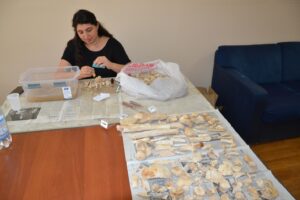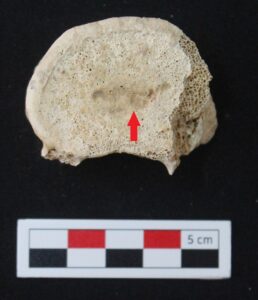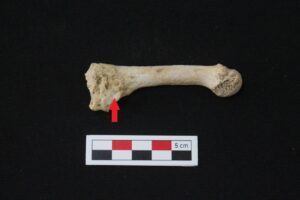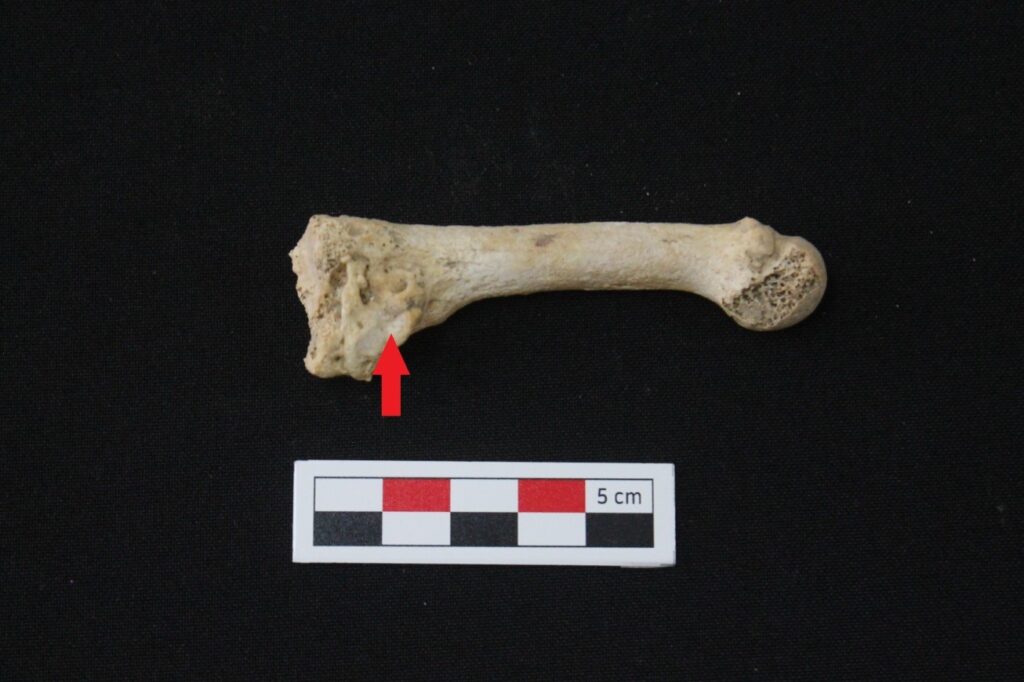In 2022, anthropological and paleopathological studies were carried out on the skeletons found in burials No. 6 and No. 7 in the Myntobe cemetery. As a result, the skeleton found in situ in Plague No. 6 had a hernia in the waist and a trace of infection in one finger, while the skeleton in Plague No. 7 had a low social status during its life, it was mostly fed on hard cereals, and therefore its teeth were severely deformed. In addition, anemia (thickened skull due to lack of blood), periostitis of the tibia and joint disease (temporomandibular joint) were detected from this skeleton. Paleopathological studies were conducted by Emel Azhar, PhD, a young scientist at Hittite University in Turkey.

 |
Hernia trace identified from the waist of the skeleton in grave №6 |
 |
Traces of infection found on the finger of the skeleton in grave №6 |
